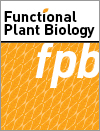FP21335Good vibrations: Raman spectroscopy enables insights into plant biochemical composition
Matter scatters a very small amount of light in a different colour to the one used to illuminate a sample. This change in colour can be used to measure the chemical content of plants in a non-invasive manner. Raman spectroscopy, as a tool, provides great opportunities to study plant physiology and crops.





